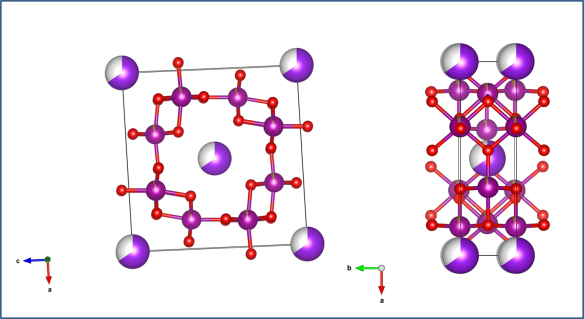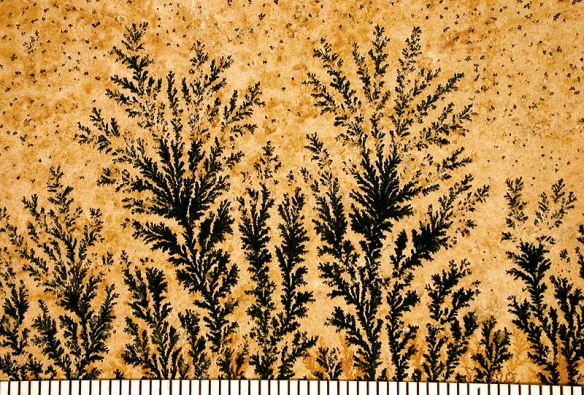A mineral often mistaken for a fossil – cryptomelane
What does it look like?

Two views of the cryptomelane structure, showing how the manganese oxide (maroon and red atoms) make a channel for other elements (in this case the larger purple potassium) to sit in. Image generated by the VESTA (Visualisation for Electronic and STructural Analysis) software http://jp-minerals.org/vesta/en/
What is it?

Dentrite growing on limestone. Photograph taken by Mark A. Wilson (Department of Geology, The College of Wooster).
There are a number of minerals that have confused scientists over the years because they don't quite grow in the way we expect. Known as dendrite minerals, these often form in tree-like patterns on rock, making many mistake them for fossils. They are very common, and are often found forming on the surfaces of limestone rocks.
They are mainly manganese minerals, and occur when manganese rich fluids take advantage of small cracks in the rocks. As they move through they deposit crystals within the cracks, which is what gives them this tree-like form.
Dendrite grown has even been perfomed in a low gravity situation!
Where did the structure come from?
Cryptomelane is a hollandite-type crystal structure, characterised by the channels the framework of manganese oxides make – which allows other elements to substitute in. This structure came from work by Post, Von Dreele, and Buseck, and is #9007647 in the Crystallography Open Database.






